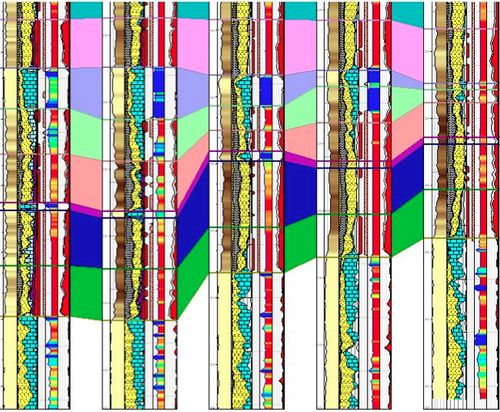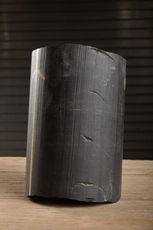The Importance of Shale Gas Exploration in Europe
Authors: M. Mitschanek, M. Prohaska, G. Thonhauser
Co Authors: E. Müller-Huber, J. Schön
University of Leoben, Austria
Published: February 20, 2014
The development of shale gas in the United States has shown that only with the consideration of a number of factors can the production rates of gas and/or liquids from unconventional reservoirs become economical. For this reason, and because of Europe’s geopolitical situation and its energy strategy, a much more precise characterization of European shale gas/liquids plays is required for the meaningful evaluation of various development scenarios.
For a better understanding of Europe’s shale gas reserves, specific exploration campaigns will be needed to answer three principal questions:
- What are the sizes of potential shale gas plays?
- What type of fluids can be expected?
- What will be the fluid deliverability?
The Chair of Drilling and Completion Engineering at the University of Leoben, Austria, in co-operation with industrial partners, is currently working to address exactly these issues by developing a unique environmentally friendly drilling and exploration system.
Future exploration wells will have to be drilled at strategic points to evaluate the potential of resources for further development. These wells will have the sole purpose of evaluating the formations and gathering information about them with state-of-the-art coring and logging technology.
This article aims to describe exactly the methods and technology needed for the exploration phase, to assess Europe’s shale gas potential in a structured, efficient, and environmentally friendly way.
Why are Exploration Wells required?
As a study from the Centre of European Reform pointed out, there are 50 estimates from various literature sources. The estimates for technically recoverable shale gas resources in the EU are considered to be about 10%, and up to 35% of the gas in place1, and as high as 17.6 and as low as 2.3 trillion m3.2 This shows a variance of almost one order of magnitude.
Some conclusions that can be drawn indicate the potential could be quite substantial and is definitely considerable for Europe, but the numbers also demonstrate uncertainty within these estimations. The uncertainty is firstly due to the inherent variance in shale rock properties, which can significantly vary from one well to another. Therefore production rates, as US experience also shows, may significantly vary from well to well. Secondly this high level of uncertainty can be attributed to insufficient areal coverage of about only one exploration well per 800km2.3
Numerous properties typically evaluated for shale show tremendous variance, which affects the outcome of the volumetric predictions. That fact requires a scientific and disciplined approach for the best possible characterization in Europe.
Technology is the key
As already indicated above, various parameters have to be defined as part of unconventional resource exploration.
The first one is the geometric/volumetric extent of the shale layers. Two main sources of information can be used: logs of existing/conventional oil and gas wells; and seismic measurements in connection with geologic studies.
Logs deliver a continuous documentation of the whole profile in terms of physical properties, offer the advantage of correlating the shale layers to their exact depths and defining the precise thicknesses, and allow a well-to-well correlation, as in Figure 1. The drawback is that logs do not provide information on the parameters in between two wells. The latter problem can be solved with seismic measurements at the surface, which indicate the continuity and geologic complexity over a larger distance or area using 2D or 3D seismic measurements, respectively. Using just the existing information is not sufficient for reliable estimations as was also indicated above.
 Figure 1: Exploration wells log correlation and cross-section of petrophysical properties. Track 1: Clay volume; Track 2: Mineralogy; Track 3: Pay indicator flag (red shading) and reservoir quality indicator (striped shading); Track 4: Water saturation; Track 5: Total porosity (black line), effective porosity, and gas-filled porosity (red shading).4
Figure 1: Exploration wells log correlation and cross-section of petrophysical properties. Track 1: Clay volume; Track 2: Mineralogy; Track 3: Pay indicator flag (red shading) and reservoir quality indicator (striped shading); Track 4: Water saturation; Track 5: Total porosity (black line), effective porosity, and gas-filled porosity (red shading).4The next step is to estimate the gas in place and the gas production potential in these formations. In order to do that, wells have to be drilled and logged and/or cored subsequent to drilling operations. Logging implies lowering a tool equipped with special sensors and measurement devices into the wellbore and obtaining information about the rock around the wellbore – logs are an indirect type of information and must be transformed into reservoir properties. Sophisticated interpretation implements log and core data. Also for a better characterization of the mechanical rock properties and fluid flow behavior, which provide critical information for the completion of development wells, cores are required.
Logging
Logging oil and gas wells is a standard procedure in the oil and gas industry since its early beginnings. Logs of shale rocks however, have been more focused on potential well bore stability problems than on production potential. Due to the development of this type of unconventional resource, tools had to be tailored to focus exactly on specific shale properties. Some of the difficulties of a proper characterization are outlined below:
Conventional reservoirs often possess a less complex composition and structure in the rock components, as well as quite predictable properties. Shale layers in contrast are multi-component systems and show large variances in their composition and internal rock structure.5 Figure 2 shows a typical shale system. In conventional sandstone reservoirs usually only inorganic matrix and inorganic pores are present, filled either with brine water, hydrocarbons, or any other gas such as CO2.
Shale rocks, on the other hand, have organic matrix and organic pores too. Now difficulties arise in the correct estimation of the components of the inorganic matrix, especially the composition of clay minerals, the estimation of the amount of organic matrix and the estimation of the porosity, which is contributing significantly to the total gas in place.
Due to the additional components and for the purpose of gas production, it is necessary to determine additional parameters: clay content, total organic carbon, brittleness index and other parameters can only be inferred approximately from logs of shale formations. The most accurate way to determine these parameters and other key properties such as the vitrinite reflectance, which gives an indication of the maturity of the rock, is to measure them directly at the core. Measurement of all these parameters has not been routinely provided for in existing conventional oil and gas wells in Europe and is the reason why logs alone cannot reliably be used for the determination of the actual hydrocarbon potential.
Even with state-of-the-art logging technology, however, some difficulties still exist, requiring rock samples to be brought to the surface for further testing.
Coring
Coring requires special equipment at the bottom of the drill pipe. First a coring bit is needed, which cuts the rock just at its circumference and has a circular hole in its center, as shown in Figure 3. Second, a bottom-hole assembly directly attached to the bit is used in order to retrieve the core, Figure 4, from the well.
Previously, conventional coring methods usually required lowering the drill string into the hole, drilling the core, and pulling the entire drill string out again. This was time consuming and nowadays wireline coring is used to operate more efficiently. Instead of pulling the drill pipe out of the hole, a cable called the wireline is lowered into the hole and retrieves just the core barrel.
One requirement of the exploration phase is the finding of sweet spots, which are regions that have properties critical for high production potential, in the shale layers. One observation, according to the BGR study, is that the formation thicknesses in Germany are in the range from 10s to 100s of meters.9 For a successful characterization, entire sections should be cored to identify zones of high potential zones.
Further, it is critical that these rock samples represent the downhole conditions. Time delays, core handling and transportation between the core drilling process and core evaluation can cause desiccation, changes in the fluid saturation, opening of cracks, mobilization of interstitial clays and alterations of other important properties, which affects the core quality as well as the core analysis results. Thus, it is recommended to perform an evaluation on-site immediately after retrieving the core from the well.
Exploration well characteristics and rig requirements
Coring and logging are technologies used to gather information in and around the borehole. As the lateral heterogeneity of the shale properties is rather large, numerous exploration wells would have to be drilled in a pattern-like arrangement for the best possible rock characterization and estimation of technically recoverable resources.
In practice, however, exploration well density is rather low. In the US densities of about one well per 400km2 are reported.10 For Europe, the numbers are currently even lower, as pointed out earlier in this article.
To keep environmental impact low, slim-hole or even micro-hole wells are valuable options compared to standard diameter wells. A small diameter well requires just minor amounts of drilling fluid (about 1:10) and also creates much less drill cutting and drilling waste (about 1:30) in comparison to standard diameter wells. Equipment, as well as rig requirements, can be decreased significantly, which decreases the energy requirements (about 1:4) and the surface footprint (about 1:4) of the operations.11 Such an approach is designed to be highly cost effective to offset the costs for an intensified exploration program.
Utilizing the latest technology, exploration wells will have the following characteristics:
- Wells will be sparsely distributed over larger areas;
- Wells will be vertical only;
- No hydraulic fracturing operations will be required;
- Wells will be of small diameter to keep the environmental footprint low;
- They will be cost effective for an intense exploration program.
Conclusion
To define Europe’s shale gas potential, precise information about the rock is necessary. Although wells, logs, and cores already exist in most of the shale basins in Europe, their use for precise property estimations is limited. The density of available information is sparse. For more accurate downhole information, the drilling of exploration wells is indispensible. It is essential to utilize environmentally friendly and highly efficient technology that allows the collection of relevant exploration information at a large scale, to quantify Europe’s unconventional resource potential.
The proposed exploration wells will be different to US shale gas development wells insofar as no horizontal drilling and no high volume hydraulic fracturing operations are required to determine resource potential. Slim hole wells will be drilled to perform fast and efficient exploration drilling, to keep the environmental impact to a minimum.
The latest logging and continuous coring technology including on-site real-time core evaluation technology will be used to get the most accurate information defining Europe’s true shale resource potential.
References
1 Web page "SHIP" last visited: 15.01.2014
2 David Buchan, „Can shale gas transform Europe’s energy landscape?“ (Weblink) Centre for European Reform, July 2013
3 The European Resource Center for Shale Gas, Tight Gas and Coal Bed Methane. Web page last visited: 15.01.2014
4 Ejofodomi, E., et al., “Integrating All Available Data to Improve Production in the Marcellus Shale”, SPE 144321, SPE North American Unconventional Gas Conference and Exhibition held in The Woodlands, Texas, USA, 14–16 June 2011
5+6 Bust, V. K., et al., „The Petrophysics of Shale Gas Reservoirs: Technical Challenges and Pragmatic Solutions“, IPTC 14631, International Petroleum Technology Conference held in Bangkok, Thailand, 7–9 February 2012
7 Roger, K.L., et al., “Harnessing Multiple Learning Styles for Training Diverse Field Personnel in Conventional Coring Operations”, IPTC 16654, International Petroleum Conference, Beijing, China, 26-28 March 2013
8 Colorado School of Mines. Web page last visited: 15.01.2014
9 Andruleit, H., et al., „Abschätzung des Erdgaspotentials aus dichten Tonen (Schiefergas) in Deutschland”, Bundesanstalt für Geowissenschaften und Rohstoffe, Hannover, Mai 2012
10 Ejofodomi, E., et al., “Integrating All Available Data to Improve Production in the Marcellus Shale”, SPE 144321, SPE North American Unconventional Gas Conference and Exhibition held in The Woodlands, Texas, USA, 14–16 June 2011
11 TDE Group. Web page last visited: 15.01.2014








